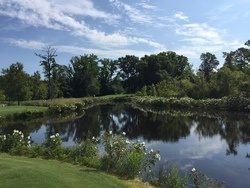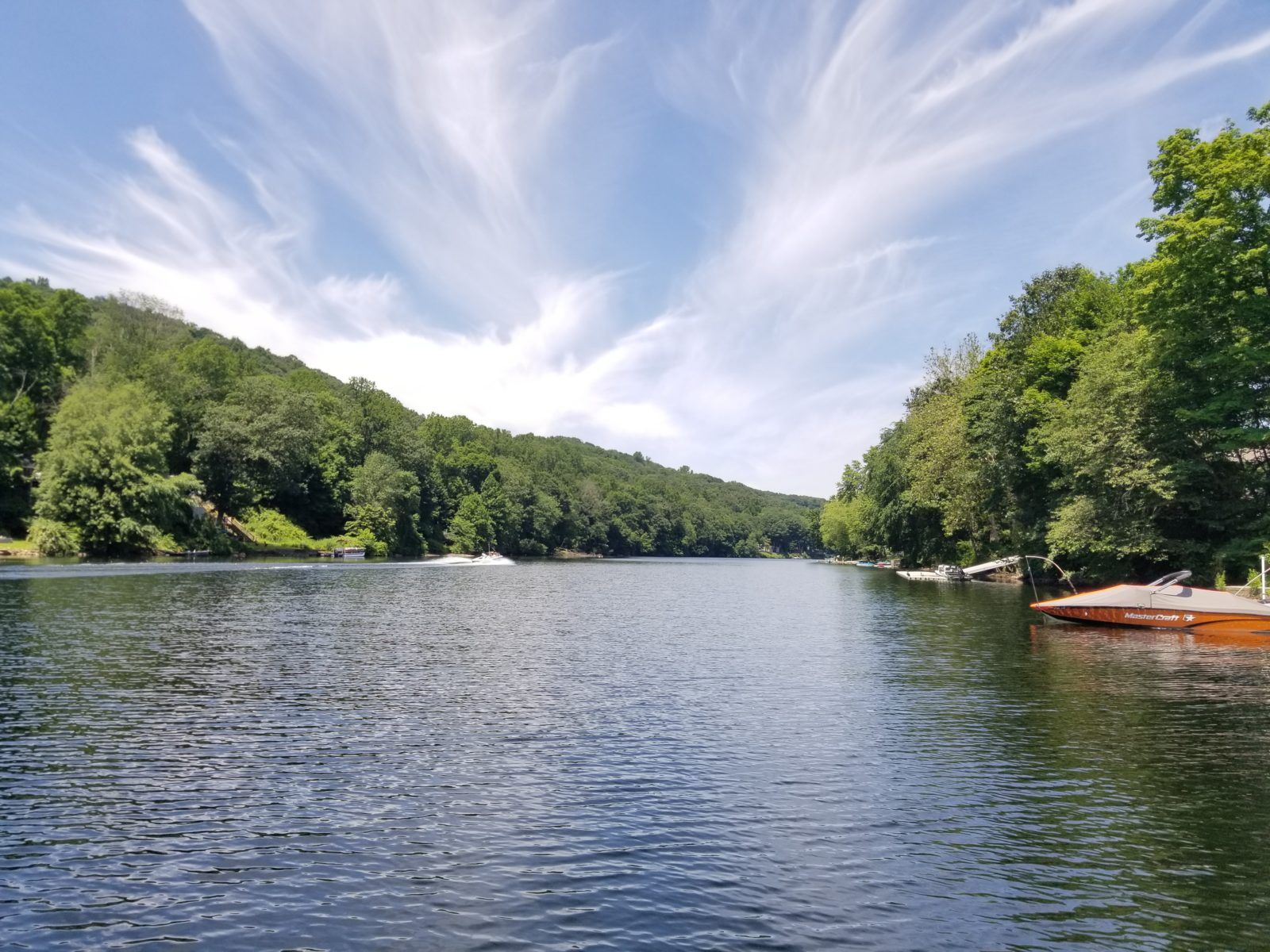Hydro-raking: A Lakefront Management Tool
June 26th, 2017
Written by Industry Expert Emily Walsh, Environmental Scientist
 “Cowabunga!!” shouts Jimmy as he splashes in the crystal refreshing water and laughs to his friends to the side of the rope swing. “Come on in, lunch is ready!” yells mom as she smiles happily at the thought of the memories currently in the making.
“Cowabunga!!” shouts Jimmy as he splashes in the crystal refreshing water and laughs to his friends to the side of the rope swing. “Come on in, lunch is ready!” yells mom as she smiles happily at the thought of the memories currently in the making.
Ten years later mom stares off into the distance where that rope swing used to sway to the beat of her children’s laughter. She now notices the empty space, along with the aquatic vegetation and accumulated organic matter that has been slowly creeping in year after year. She sits there for a few minutes, pondering how much life has changed – not only for her family, but for the aquatic ecosystem as well.
This moment, as it relates to our lakes and ponds, is one that is shared by many private shoreline residents. As time elapses, organic matter buildup can slowly increase from a variety of sources including leaf debris, woody sticks, inlet flows, and point sources such as culverts or non-point sources such as rainfall runoff. Input of organic matter slowly accumulates, leading to decreased water depth, altered hydrologic movement, hindered aquatic habitats, increased turbidity and impeded recreational value.
This cycle holds true in regards to aquatic vegetation as well. The longer a freshwater system is left unmanaged, the greater the chances are of an invasive species colonization. With multiyear populations establishing, the most competitive aquatic vegetation will win the competition – most likely an invasive plant. The result can be a complete monoculture, in which one plant dominates and biodiversity is diminished. This monoculture can eventually contribute to the increased organic matter layer, and can result in anoxic conditions through decomposition.
 In the case of Jimmy’s mom, hydro-raking would be the perfect solution to her dilemma. The hydro-rake could be inserted at the town boat launch and allocated directly in front of the rope swing. The hydro-rake could then remove the associated organic matter and nuisance vegetation to restore the open water space. The material would then be gently placed on the associated shoreline and disposed of by a private landscaping company. In about 3 days the job would be complete, with years of ecological cycling restored.
In the case of Jimmy’s mom, hydro-raking would be the perfect solution to her dilemma. The hydro-rake could be inserted at the town boat launch and allocated directly in front of the rope swing. The hydro-rake could then remove the associated organic matter and nuisance vegetation to restore the open water space. The material would then be gently placed on the associated shoreline and disposed of by a private landscaping company. In about 3 days the job would be complete, with years of ecological cycling restored.
Employing a hydro-rake as a management tool provides many biological benefits. To start, hydro-raking increases the overall water depth, recouping habitat for aquatic flora and fauna to thrive in. In the process of removing the detritus and/or nuisance vegetation, the hydro-rake is also removing nutrients such as phosphorus and nitrogen. If these pond nutrients are left unmanaged the waterbody can become nutrient overloaded, a process known as eutrophication. This can intern lead to ecological degradation through excessive aquatic plant growth, recurring algae blooms, oxygen depletion, fish kills and the death of other aquatic life. In addition, the improved water movement can lead to increased dissolved oxygen levels and reduced mosquito breeding habitat.
The hydro-rake is available for a variety of durations, spanning from one day projects to month long programs. These projects can also be incorporated into annual maintenance programs, in which your shoreline can be maintained every year or on a bi-annual basis. In addition to private shoreline residents, the hydro-rake can be utilized to restore channels, inlets, outlets, coves, or whole waterbodies. If you would like to acquire more information regarding hydro-raking processes, feel free to check out the mechanical solutions on the website or contact your local lake and pond management representative for a site assessment and customized plan.
Contact the experts at 888-480-5253 for all of your lake, pond and fisheries management needs.
 Emily Walsh is an Environmental Scientist with SOLitude Lake Management who assists the mechanical division with invasive weed control services, surveys, reports, proposals and GIS mapping. She is currently licensed to apply pesticides in Massachusetts and Connecticut. She also has experience in terrestrial invasive species applications, particularly Common Reed (Phragmites australis) and Japanese Knotweed (Fallopia japonica), along with aquatic nuisance vegetation applications.
Emily Walsh is an Environmental Scientist with SOLitude Lake Management who assists the mechanical division with invasive weed control services, surveys, reports, proposals and GIS mapping. She is currently licensed to apply pesticides in Massachusetts and Connecticut. She also has experience in terrestrial invasive species applications, particularly Common Reed (Phragmites australis) and Japanese Knotweed (Fallopia japonica), along with aquatic nuisance vegetation applications.
SOLitude Lake Management is committed to providing full service lake and pond management services that improve water quality, preserve natural resources, and reduce our environmental footprint. Our services include lake, pond and fisheries management programs, algae and aquatic weed control, mechanical harvesting, hydro-raking, installation and maintenance of fountains and aeration systems, water quality testing and restoration, bathymetry, lake vegetation studies, biological assessments, habitat assessments, invasive species management and nuisance wildlife management. Services, consulting and aquatic products are available to clients nationwide, including homeowners associations, multi-family and apartment communities, golf courses, commercial developments, ranches, private landowners, reservoirs, recreational and public lakes, municipalities, parks, and state and federal agencies. Learn more about SOLitude Lake Management and purchase products at www.solitudelakemanagement.com.










